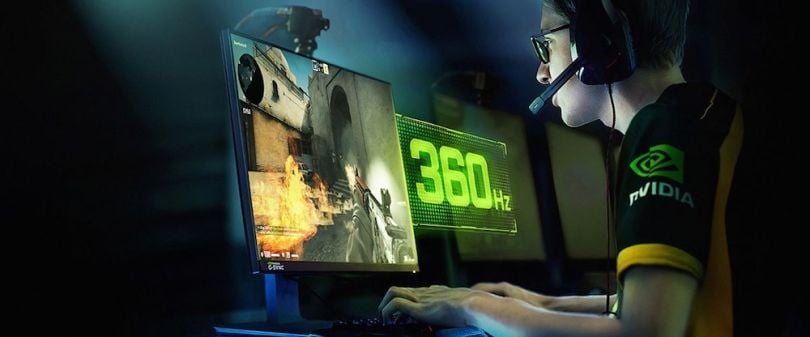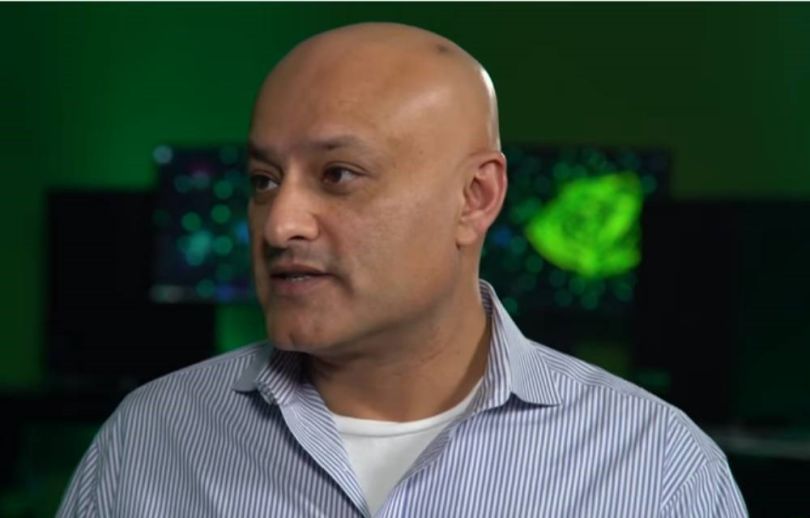For competitive gamers, quick reaction times are key. Whether those pros are creeping down a hallway in CS:GO’s Dust II map with a nervous finger on the trigger or coordinating complex middle lane maneuvers in a League of Legends matchup, milliseconds can mean the difference between success and failure. And with millions of dollars in esports prize money, endorsement deals and betting revenue up for grabs, the stakes are high.
But when we talk about reaction intervals in gaming, we’re really talking about two different pieces of a complex system. The first component is human reaction, which plays a key role in a gamer’s success. The second is the latency in a gaming system — the time interval between keystroke command and on-screen action.
Esportsearning.com's Top 5 Esports Pros by Prize Earnings
- Johan “N0tail” Sundstein, Denmark, $6,890,591
- Jesse “JerAx” Vainikka, Finland, $6,470,000
- Anathan “ana” Pham, Australia, $6,000,411
- Sébastien “Ceb” Debs, France, $5,489,233
- Topias Miikka “Topson” Taavitsainen, Finland, $5,414,446
As part of an ongoing quest to reduce the latter and give its users a competitive edge, Silicon Valley firm NVIDIA unveiled a new range of super-fast esports monitors at January’s CES in Las Vegas. The company developed the monitors using its G-SYNC processors alongside display manufacturer ASUS and LCD panel designer AU Optronics. The project produced the fastest refresh rate in gaming: 360 hertz.

Latency is the Enemy
NVIDIA first began producing G-SYNC processors in 2013 with the goal of eliminating screen tearing, stutters and other visual interferences that plagued recreational and professional gamers alike. Screen tearing in particular was a major concern for esports competitors. It’s caused by a mismatch between a screen’s video feed and refresh rate.
“We addressed that problem by matching the display’s refresh rate to the frames-per-second output from the GPU,” said Vijay Sharma, NVIDIA’s director of product management. “You had this perfect synchronization of refresh rate to FPS, and that eliminated tearing and display-related stutter and minimized input lag.”
G-SYNC’s main competitor in the fight against screen tearing is AMD’s FreeSync. The main differences in performance boil down to the fact that FreeSync is compatible with any variable refresh rate monitor, while G-SYNC requires manufacturers to install extra hardware modules.
According to Sharma, NVIDIA goes to great lengths to test monitors bearing the G-SYNC logo. Each model, he said, must pass some 300 internal tests and certifications before it can go to market. Those tests measure variables like color, luminance, latency and even the uniformity of pixels across an entire display.
What difference does it make to play on such a fast monitor? At 360 hertz, the screen updates every 2.77 milliseconds. That’s six times faster than your average 60 hertz screen, which, Sharma said, refreshes at the comparatively lethargic rate of once every 16.7 milliseconds.
“Imagine an object moving from left to right at a constant speed,” Sharma said. “If you open your eyes once every 16.7 milliseconds (the refresh interval at 60 hertz), you’ll get 60 discrete snapshots of the objects — and 60 opportunities to shoot at it.”
At 360 hertz, the refresh interval drops to 2.77 milliseconds, giving gamers 360 snapshots of the same image per second — and a gameplay experience where actions flow in an uncanny imitation of the real world.
“When I switched between 240 and 360 hertz, I could immediately tell that there was a difference,” said five-time CS:GO champion Jordan “n0thing” Gilbert in a press release at the time of the announcement.
Of course, display only accounts for part of the latency within a gaming system. But at the height of competition, every fraction of a millisecond counts.
“It’s as if we built a driver for Tiger Woods,” said Sharma, “and by using this new driver, Tiger can hit the ball an extra hundred yards. Now, if I use that same driver, my shots won’t go an extra hundred yards — but my game will still improve.”

Monitors as A System
The images projected onto a PC monitor are the end result of an intricate system that operates at lightning speed. To achieve a refresh rate of 360 hertz, NVIDIA and its partners needed to optimize every step of that system, from the GPU interpreting keystrokes and clicks to the display itself.
“To start with, you need a GeForce RTX series to be able to render at high frameworks,” Sharma said, referring to NVIDIA’s own range of high-performance GPUs.
The next step in the system is the G-SYNC processor, which accepts input over a display port from the GPU and drives the timing controllers in the LCD panel to deliver the picture. NVIDIA uses a variation of a long-standing industry trick known as overdrive to eliminate ghost images trailing behind moving objects and speed up refresh rates. G-SYNC overshoots the target color for each color transition pixel by pixel, shortening the time it takes to transition to the desired color. To perform these tasks at the required speed, Sharma said his team had to design the latest generation of G-SYNC processors from scratch.
“Everyone invariably got a higher score on the faster monitor.”
“You need a processor and a monitor that can operate very quickly,” he said. “At 360 hertz you have very little time to determine what your overdrive settings would be. And if you’re building a high-speed HDR display, you need to be able to set the backlight very quickly.”
The last element in any display system is the LCD panel, which NVIDIA built in partnership with AU Optronics.
“Panels use transistors and silicon, so you can’t always just turn the hertz up,” Sharma said. “So we had to work with them to design a cell structure that can achieve the speeds we require.”
The Road to 1,000
Building super-fast monitors takes a tremendous amount of time and energy; Sharma said the project to build technology capable of producing a 360 hertz refresh rate took around 18 months. That’s down from previous monitor projects at the company, which he said have taken up to 30 months from start to finish.
However, Sharma said faster speeds translate to higher performance for all gamers, pointing to an experiment the company conducted at this year’s CES. In it, attendees performed flick shots at targets in CS:GO on a 60 hertz and 360 hertz monitor.
“Everyone invariably got a higher score on the faster monitor,” Sharma said.
For NVIDIA and its partners, that increased performance is good evidence to support their continued focus on developing gaming monitor technology in the future. ASUS, which will release the first super-fast monitors later this year, reportedly sees such developments as a stepping stone to a much loftier goal: a 1,000 hertz monitor.



